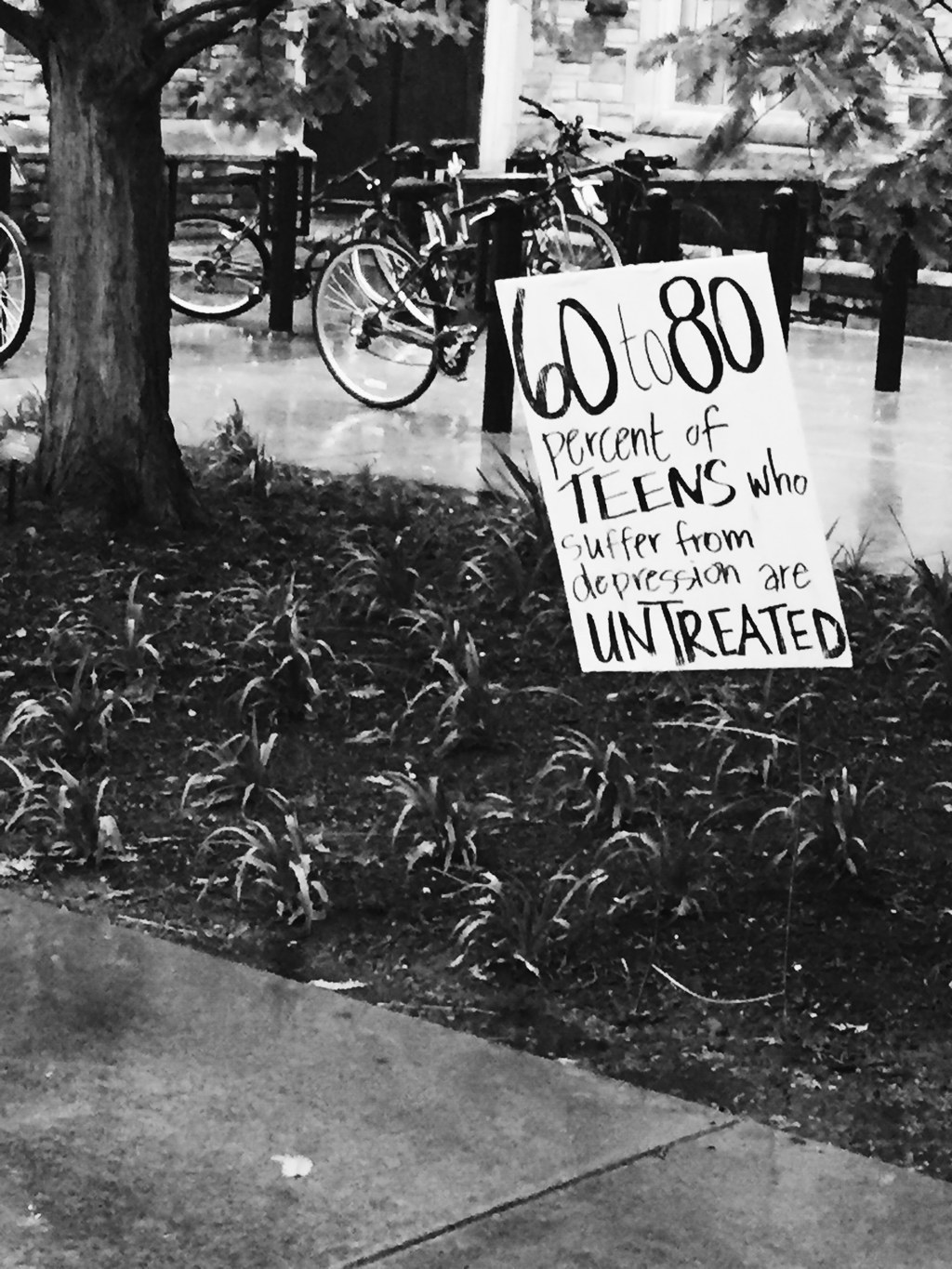"I feel like I can see color again! I had forgotten what it was to be happy... I just wanted to not want to die. If you hadn't convinced me to go to the counseling center, I don't know if I would be alive right now."

These words prompted a wellspring of tears, and an influx of varied emotions. One of my closest friends had been teetering on the edge of existence, and I played some small but integral part in keeping her here. In telling her about my struggle with anxiety and depression, and my experiences with treatment, I prompted a series of thoughts and actions that resulted in her taking a brave step towards a happier life.
My friend and I are not alone; one in four college students have a diagnosable mental illness, and suicide is the second leading cause of death within this demographic. One of my childhood friends died by suicide my freshman year of college. Despite the prevalence of these mental health issues, however, very few college students feel comfortable acknowledging their struggles, confiding in their friends and family, or seeking professional help. This silence creates shame, perpetuates misinformation, and prevents college students from getting the (potentially lifesaving) help that they need.

Stigma stems from isolation and misinformation, so the solution to this problem lies in communicating openly, honestly, and accurately about mental illness. Social media campaigns that dispel common misconceptions about mental illness can be a powerful tool to combat stigma in the collegiate community; any piece of information or inspiration can make a difference. Sharing an infographic cartoon about what it feels like to have depression on Facebook could help someone better understand and empathize with what another is going through, and help someone else feel less isolated by their own depression.

An installation called Send Silence Packing brings 1,100 backpacks to college campuses around the United States and places them in the quad. These backpacks represent the college students that die by suicide each year, and give a very powerful visual representation to a number that is hard to put into context. When faced with vast stretches of backpacks, notes from family members and loved ones, and images of those who were lost to this insidious illness, it becomes harder to ignore the magnitude of mental health awareness.
When I asked her if I could share part of her story, my friend had this to say: "Honestly, I'm so done pretending like I wasn't suicidally depressed for years of my life. That took a lot of energy to hide and deal with - and now that I can feel joy and emotion again, I want to tell everybody. I want everybody that feels like I felt to know that if they can just hang on for like 10 more minutes, that one day they will feel like they can breathe again and everything will stop hurting all the time. If your essay tells one person that seeking help is okay, and that they can blink without crying one day - I want you to share it. Hell, tag me if need be. It's worth it."
There is such power in this vulnerability; it is hard to talk about mental illness, and it is scary to confront the reality of this issue, but the alternative is scarier. The thought of people suffering in silence is terrifying. So when I inundate my Facebook friends with mental health articles, when I talk about the prevalence of mental illness among college students to anyone who will listen, when I share my own struggles and triumphs, when I draw a semicolon on my wrist, it is with this in mind. The silence is scarier, so I will keep talking in the vain hope that someone, anyone, is listening.

